Caveats in Environmental Justice, Consumption and Ecological Footprints: The Relationship and Policy Implications of Socioeconomic Rank and Sustainable Consumption Patterns
Abstract
1. Introduction
2. Literature Review
3. Methods
4. Results
5. Discussion and Conclusions
Author Contributions
Funding
Conflicts of Interest
Appendix A
| Ecological Footprint Rating | Product Name | Remarks |
|---|---|---|
| 1 (smallest) | Loaf of bread | |
| Wine bottle or other alcoholic bottle | Bottle can be recycled | |
| Pita and rolls | ||
| Cereal | ||
| Fresh Vegetable | ||
| Fresh Fruit | ||
| Flour Pack | ||
| One kilo of potatoes | ||
| Palpal or hummus in pita | ||
| 2 | Chocolate table | Based on cocoa imports |
| Oil bottle | In a plastic bottle | |
| Bottle of fruit juice | In a plastic bottle | |
| Hummus | In plastic packaging | |
| Imported cereals | ||
| Mineral water | In a plastic bottle | |
| Imported dried fruits | ||
| Pasta in packaging made in Israel | ||
| Rice package made in Israel | ||
| A cup of cappuccino in a restaurant | Usually contains cow’s milk and based on imported coffee beans | |
| 3 | Takeaway Salad | In plastic packaging |
| Imported pasta in packaging | ||
| Imported rice package | ||
| A can of beer | ||
| A cup of cappuccino in T.A | Usually contains cow’s milk, based on imported coffee beans and served in a disposable cup | |
| Eggs | ||
| Ice cream | Usually based on cow’s milk | |
| Pizza/pasta dish at the restaurant | ||
| 4 | Hot dogs | Made from meat industry residues |
| Fish / Seafood | Fresh | |
| Shawarma in pita | ||
| Yogurt and milk products | Long production process and non-perishable packaging | |
| Yellow cheese packs | Long production process and non-perishable packaging | |
| White cheese boxes/cottage | Long production process and non-perishable packaging | |
| Chicken | ||
| Turkey | ||
| 5 (biggest) | Canned fish | Long production process and non-perishable packaging |
| Beef | ||
| Lamb | ||
| Frozen fish | ||
| Milk carton | ||
| Hamburger | ||
| Sausage | ||
| Where Most of the Shopping Is Purchased | ||
| 1 | In the market | |
| 2 | Neighborhood grocery store | |
| 3 | Delivery from the Internet | |
| 4 | Minimarket | |
| 5 | Supermarket | |
| Dietary Patterns | ||
| 1 | Vegan saves | |
| 2 | Vegetarian | |
| 3 | Reduces meat | |
| 4 | Kosher | |
| 5 | Omnivore | |
| Number of Items Purchased per Month | ||
| 1 | 0–1 | |
| 2 | 2–3 | |
| 3 | 4–6 | |
| 4 | 7–9 | |
| 5 | 10 and more | |
| Estimated Cost of Average Item | ||
| 1 | 131 and more | |
| 2 | 101–130 | |
| 3 | 71–100 | |
| 4 | 31–70 | |
| 5 | 1–30 | |
| Where do You Buy Most of Your Clothes? | ||
| 1 | Secondhand stores | |
| 2 | Local designer stores | |
| 3 | International designer stores | |
| 4 | Fast fashion stores in malls | |
| 5 | Internet | |
| Frequency of Participation in Give and Take Markets | ||
| 1 | More than once a month | |
| 2 | Between one and three months | |
| 3 | Between three and six months | |
| 4 | Between six months and once a year | |
| 5 | Never | |
| How Often You Wash Your Clothes? | ||
| 1 | Having over 6 uses | |
| 2 | After 4–6 uses | |
| 3 | After 2–3 uses | |
| 4 | Depending on the condition of the garment after use | |
| 5 | After each use | |
| Considerations for Purchasing Clothing on a Scale of 1 to 5 | ||
| Consideration | Rating | |
| Trendiness of the garment | The higher the rating, the higher the ecological footprint | |
| price | The higher the rating, the higher the ecological footprint | |
| Unique garment | The higher the rating, the lower the ecological footprint | |
| Where is the garment made | The higher the rating, the lower the ecological footprint (Double weight) | |
| Environmental considerations | The higher the rating, the lower the ecological footprint (Triple weight) | |
| Conditions of employment of garment manufacturers | The higher the rating, the lower the ecological footprint | |
| Sustainable values | The higher the rating, the lower the ecological footprint (Double weight) | |
| Fair price | The higher the rating, the higher the ecological footprint | |
| Convenience of purchase | The higher the rating, the higher the ecological footprint | |
| Brand credibility | The higher the rating, the lower the ecological footprint | |
| Brand popularity | The higher the rating, the higher the ecological footprint | |
| Fabric composition | The higher the rating, the lower the ecological footprint | |
| Common Means of Transportation | ||
| 1 | Walking and regular bikes | |
| 2 | Electric bicycle / electric scooter | |
| 3 | Bus / taxi service / train | |
| 4 | Hitchhike / private car as a passenger | |
| 5 | Private car | |
| Frequency of Use of the Means of Transport (Multiplies the Means of Transport) | ||
| 1 | Once a week | |
| 2 | 2–3 times a week | |
| 3 | 4 times a week | |
| 4 | Once a day | |
| 5 | Several times a day | |
| Ownership of the Car | ||
| 1 | No car | |
| 2 | Other | |
| 3 | Owned by the employer | |
| 4 | Owned by spouse/parents | |
| 5 | Owned by me | |
| Considerations for Choosing Means of Transporton a Scale of 1 to 5 | ||
| Consideration | Rating | |
| Comfort | The higher the rating, the higher the ecological footprint | |
| Trip duration | The higher the rating, the higher the ecological footprint | |
| Cost | The higher the rating, the lower the ecological footprint | |
| Reliability | The higher the rating, the higher the ecological footprint | |
| Environmental considerations | The higher the rating, the lower the ecological footprint (triple weight) | |
| Habit | The higher the rating, the higher the ecological footprint | |
| Form of Housing | ||
| 1 | Apartment in building without elevator | |
| 2 | Apartment in building with elevator | |
| 3 | Ground floor one story without yard | |
| 4 | One-story ground house with courtyard / house with 2 floors or above without yard | |
| 5 | 2-storey house with courtyard | |
| The Average Apartment Area in Israel is 190 m Gross Compared to This Your House | ||
| 1 | Much below average | |
| 2 | Slightly below average | |
| 3 | Similar to average | |
| 4 | Slightly above average | |
| 5 | Well above average | |
| Frequency of Product Use on a Scale of 1–5 (the Lower the Frequency of Use, the Lower the Ecological Footprint) | ||
| Product | Weight | |
| Audio system | Normal | |
| Refrigerator | Normal | |
| Air conditioner | Double weight | |
| Washing machine | Double weight | |
| Clothes Dryer | Triple weight | |
| Baking oven | Normal | |
| Dishwasher | Triple weight | |
| Lighting | Normal | |
| Computer | Normal | |
| TV | Double weight | |
| Which of the Following Exists in Your Home (no = 0 yes = 1) | ||
| 1=1 0=5 | Long-lasting light bulbs | |
| 1=1 3=0 | Solar water heaters | |
| 1=1 4=0 | Water saving contraptions | |
| 1=1 0=2 | Installation of insulated walls | |
| How Often You Remove Unused Appliances from the Outlet | ||
| 1 | Every day | |
| 2 | Several times a week | |
| 3 | Several times a month | |
| 4 | Several times a year | |
| 5 | Never | |
| To What Extent Environmental Considerations Affect You in Choosing a Place to Live (On a Scale of 1–5) | ||
| 1 | very much | |
| 2 | 4 | |
| 3 | 3 | |
| 4 | 2 | |
| 5 | Not at all | |
| Considerations in Purchasing Appliances on a Scale of 1 to 5 | ||
| Consideration | Rating | |
| Longevity | The higher the rating, the lower the ecological footprint | |
| Opacity | The higher the rating, the lower the ecological footprint | |
| Energy consumption | The higher the rating, the lower the ecological footprint | |
| Reliability | The higher the rating, the lower the ecological footprint | |
| Environmental Considerations | The higher the rating, the lower the ecological footprint (triple weight) | |
| Price | The higher the rating, the higher the ecological footprint | |
| How Many Online Products You Purchased in the Last Year | ||
| 1 | I did not purchase at all | |
| 2 | 1–5 | |
| 3 | 6–10 | |
| 4 | 11–20 | |
| 5 | Over 20 | |
| How Often do You Buy Online Products from the Following Product Group (Scale of 1–5) | ||
| Product group | Weight | |
| Clothing and footwear | Triple weight | |
| Media Devices | Double weight | |
| Home furniture and accessories | Normal | |
| Toys | D ouble weight | |
| Electrical appliances | Double weight | |
| Cosmetics | Double weight | |
| Office Supplies | Normal | |
| Food | Normal | |
| Books | Normal | |
| From What Kind Websites do You Purchase? | ||
| 1 | I never purchase online | |
| 2 | Only from Israeli websites | |
| 3 | Mostly from Israeli websites | |
| 4 | Most often on international websites | |
| 5 | Only from international websites | |
| Considerations in Purchasing Products Online on a Scale of 1 to 5 | ||
| Consideration | Rating | |
| The resistance of a product (אורך חיים) | The higher the rating, the lower the ecological footprint (Double weight) | |
| The convenience of shopping | The higher the rating, the higher the ecological footprint | |
| Product price | The higher the rating, the higher the ecological footprint (Double weight) | |
| Product quality | The lower the rating, the higher the ecological footprint (Double weight) | |
| Environmental considerations | The higher the rating, the lower the ecological footprint (Triple weight) | |
| General preference for purchasing from the Internet | The higher the rating, the higher the ecological footprint | |
| To What Extent do the Following Statements Represent Your Online Purchase Patterns on a Scale of 1–5 | ||
| Statements | Rating | |
| I usually buy with a pre-made shopping list | The higher the rating, the lower the ecological footprint (double weight) | |
| I tend to buy products following online advertisements | The higher the rating, the higher the ecological footprint | |
| I tend to buy products at night | The higher the rating, the higher the ecological footprint | |
| I tend to buy products spontaneously | The higher the rating, the higher the ecological footprint (double weight) | |
| I tend to purchase additional products that I didn’t intend to earn free shipping | The higher the rating, the higher the ecological footprint (double weight) | |
Appendix B. Correlation Matrixes for the Four Consumption Categories
| District of Residence | Income | Education Level | Family Income | ||
|---|---|---|---|---|---|
| ecological footprint levels 1 | Pearson correlation | 0.066 | 0.005 | −0.162 | −0.034 |
| Sig (2-tailed) | 0.109 | 0.911 | 0.000 | 0.411 | |
| N | 600 | 600 | 600 | 600 | |
| ecological footprint levels 2 | Pearson correlation | −0.006 | 0.026 | −0.125 | −0.048 |
| Sig (2-tailed) | 0.881 | 0.526 | 0.002 | 0.245 | |
| N | 600 | 600 | 600 | 600 | |
| ecological footprint levels 3 | Pearson correlation | 0.052 | −0.014 | −0.141 | −0.035 |
| Sig (2-tailed) | 0.205 | 0.736 | 0.001 | 0.388 | |
| N | 600 | 600 | 600 | 600 | |
| ecological footprint levels 4 | Pearson correlation | −0.009 | 0.010 | −0.173 | −0.054 |
| Sig (2-tailed) | 0.816 | 0.809 | 0.000 | 0.183 | |
| N | 600 | 600 | 600 | 600 | |
| ecological footprint levels 5 | Pearson correlation | −0.012 | 0.028 | −0.184 | −0.062 |
| Sig (2-tailed) | 0.304 | 0.636 | 0.000 | 0.201 | |
| N | 600 | 600 | 600 | 600 | |
| General consumption index | Pearson correlation | 0.021 | 0.005 | −0.174 | −0.051 |
| Sig (2-tailed) | 0.607 | 0.894 | 0.000 | 0.211 | |
| N | 600 | 600 | 600 | 600 | |
| District of Residence | Income | Education Level | Family Income | ||
|---|---|---|---|---|---|
| Considerations in buying fashion and clothing products | Pearson correlation | −0.073 | −0.035 | −0.055 | 0.011 |
| Sig (2-tailed) | 0.072 | 395 | 0.178 | 0.792 | |
| N | 600 | 596 | 600 | 0.600 | |
| Type of store, frequency of purchase and participation in “Take and Give” markets | Pearson correlation | −0.019 | −0.026 | −0.106 ** | 0.015 |
| Sig (2-tailed) | 640 | 0.522 | 0.010 | 0.706 | |
| N | 600 | 596 | 600 | 600 | |
| Overall footprint in fashion and textile | Pearson correlation | −0.103 * | −0.028 | −0.040 | 0.023 |
| Sig (2-tailed) | 0.011 | 0.491 | 333 | 0.566 | |
| N | 600 | 596 | 600 | 0.600 | |
| District of Residence | Income | Education Level | Family Income | ||
|---|---|---|---|---|---|
| Considerations in selecting transport vehicle | Pearson correlation | −0.021 | 0.118 ** | 0.82 * | 0.201 ** |
| Sig (2-tailed) | 0.603 | 0.004 | 0.046 | 0.000 | |
| N | 597 | 593 | 597 | 0.597 | |
| Overall footprint in transportation | Pearson correlation | −0.029 | 0.282 ** | 0.165 ** | 0.231 ** |
| Sig (2-tailed) | 0.477 | 0.000 | 0.000 | 0.000 | |
| N | 600 | 596 | 600 | 0.600 | |
| District of Residence | Income | Education Level | Family Income | ||
|---|---|---|---|---|---|
| Use of domestic electrical appliances | Pearson correlation | −0.073 | 0.280 ** | 0.031 | 0.147 ** |
| Sig (2-tailed) | 0.072 | 0.000 | 0.453 | 0.000 | |
| N | 600 | 596 | 600 | 0.600 | |
| Use of energy-saving measures | Pearson correlation | −0.077 | −0.184** | −0.109 ** | −0.109 ** |
| Sig (2-tailed) | 0.061 | 0.000 | 0.008 | 0.007 | |
| N | 600 | 596 | 600 | 600 | |
| Considerations in purchasing electrical appliances | −0.012 | −0.099 * | −0.034 | −0.078 | |
| 0.774 | 0.016 | 412 | 0.57 | ||
| 0.600 | 596 | 600 | 600 | ||
| Overall footprint in residential energy consumption | Pearson correlation | −0.005 | −0.013 | 0.003 | −0.019 |
| Sig (2-tailed) | 0.906 | 0.756 | 950 | 0.642 | |
| N | 600 | 596 | 600 | 0.600 | |
| District of Residence | Income | Education Level | Family Income | ||
|---|---|---|---|---|---|
| Considerations in online purchasing | Pearson correlation | 0.022 | 0.075 | 0.114 ** | 0.017 |
| Sig (2-tailed) | 0.607 | 0.081 | 0.008 | 0.689 | |
| N | 545 | 541 | 545 | 0.545 | |
| Spontaneous acquisition frequency | Pearson correlation | −0.019 | −0.017 | −0.134 ** | −0.015 |
| Sig (2-tailed) | 648 | 0.683 | 0.002 | 0.733 | |
| N | 554 | 550 | 554 | 554 | |
| Overall footprint in online purchasing | Pearson correlation | −0.023 | 0.094 * | 0.018 | 0.010 |
| Sig (2-tailed) | 0.571 | 0.022 | 665 | 0.799 | |
| N | 600 | 596 | 600 | 600 | |
References
- UN News. World Faces ‘Climate Apartheid’ Risk, 120 More Million in Poverty: UN Expert. 2019. Available online: https://news.un.org/en/story/2019/06/1041261 (accessed on 30 June 2019).
- The White House-Office of the Press Secretary. Remarks by the President at the United States Coast. Guard Academy Commencement. 2015. Available online: https://obamawhitehouse.archives.gov/the-press-office/2015/05/20/remarks-president-united-states-coast-guard-academy-commencement (accessed on 9 May 2019).
- Gleick, P.H. Water, Drought, Climate Change, and Conflict in Syria. Weather Clim. Soc. 2014, 6, 33. [Google Scholar] [CrossRef]
- Karnielli, A.; Shtein, A.; Panov, N.; Weisbrod, N.; Tal, A. Was Drought Really the Trigger Behind the Syrian Civil War in 2011? Water 2019, 11, 1564. [Google Scholar] [CrossRef]
- Reuters. Syria Death Toll Now Exceeds 210,000: Rights Group. 2018. Available online: https://www.reuters.com/article/us-mideast-crisis-toll/syria-death-toll-now-exceeds-210000-rights-group-idUSKBN0LB0DY20150207 (accessed on 5 July 2018).
- Israel Ministry of Environmental Protection and Jerusalem Institute of Israel Research. Sustainability Forecast for Israel 2030. 2012. Available online: http://www.sviva.gov.il/InfoServices/ReservoirInfo/DocLib2/Publications/P0701-P0800/P0711.pdf (accessed on 5 May 2019).
- Brachya, V. Literature Review on Sustainable Lifestyles, Jerusalem Institute, Jerusalem. 2014. Available online: http://www.ukayamut.com/wp-content/uploads/2014/03/Literature-Review-on-Sustainable-Lifestyles-2-1.pdf (accessed on 27 July 2018).
- UNESCO. Assessing Global Resource Use. 2017. Available online: https://www.resourcepanel.org/sites/default/files/documents/document/media/assessing_global_resource_use_amended_130318.pdf (accessed on 30 June 2019).
- Oberle, B.; Bringezu, S.; Hatfield-Dodds, S.; Stefanie Hellweg, S.; Schandl, S.; Clement, J. Global Resources Outlook. 2019. Available online: https://wedocs.unep.org/bitstream/handle/20.500.11822/27518/GRO_2019_SPM_EN.pdf?sequence=1andisAllowed=y (accessed on 5 September 2019).
- Sela-Sheffy, R.; Zardz, N. Why are we environmental and why not? On the link between culture and identity and environmental action: The Israeli context. Ecol. Environ. 2015, 6, 33–39. [Google Scholar]
- Neigarten, T. Climate Justice in Israel. Inequalities in Greenhouse Gas Emissions in Solid Municipal Waste Production and Treatment Processes; Position Paper 2; Association for Environmental Justice in Israel: Tel Aviv, Israel, 2015; Available online: http://tinyurl.com/po44sg9 (accessed on 5 May 2018).
- OECD Publishing. Israel’s Green Tax on Cars. 2016. Available online: https://www.oecd-ilibrary.org/docserver/5jlv5rmnq9wg-en.pdf?expires=1525518562andid=idandaccname=guestandchecksum=6EC26C5730FB9B4E9CCE0E2F1C343352 (accessed on 5 May 2019).
- Lubanov, K.; Milman, G.; Lusky, R. Environmental Risk and Population Projects in Israel. 2012. Available online: http://www.aeji.org.il/sites/default/files/2012_story_files/aeji_environmental_risks_policy_outline_2012.pdf (accessed on 5 May 2019).
- Carsin, A. Effective Implementation of Environmental Policies Encourage Compliance and Streamlining Enforcement. 2009. Available online: http://jerusaleminstitute.org.il/.upload/publications/heb/or_karacim_heb_f.pdf (accessed on 5 May 2019).
- Reza Khan, Z.; Rodrigues, G.; Balasubramanian, S. Ethical Consumerism and Apparel Industry-Towards a New Factor Model. 2016. Available online: http://library.bsl.org.au/jspui/bitstream/1/1072/1/Rainforests%20are%20a%20long%20way%20from%20here.pdf (accessed on 9 May 2018).
- Bass Spector, S. Health and Environmental Issues in the Unknown Bedouin Villages in the Negev; Research and Information Center: Knesset, Jerusalem, Israel, 2011; Available online: http://www.teva.org.il/GetFile.asp?CategoryID=11516andArticleID=18943andID=6466 (accessed on 9 May 2019).
- Shmueli, D. Environmental Justice in Israeli Reality. Ecol. Environ. 2010, 3, 36–45. [Google Scholar]
- Schandl, H.; Graham, S.; Williams, L. Snapshots of the Lifestyles and Consumption Patterns of A Sample of Australian Households; CSIRO: Canberra, Australia, 2009. [Google Scholar]
- Bar Tzuri, R.; Sharetzky, N. Sustainable Consumption of Households in Israel; Israel Ministry of Industry and Commerce: Jerusalem, Israel, 2010. Available online: http://employment.molsa.gov.il/Research/Documents/X10422.pdf (accessed on 9 September 2019).
- Trilnick, I.; Tal, A. Should we blame the rich for clogging our landfills? Waste Manag. Res. 2013, 20, 1–6. [Google Scholar] [CrossRef] [PubMed]
- Ottman, J. Green Marketing: Challenges and Opportunities for the New Marketing Age; NTC Business Books: Lincolnwood, IL, USA, 1993. [Google Scholar]
- Banerjee, B.; McKeage, K. How Green Is My Value: Exploring the Relationship between Environmentalism and Materialism. Adv. Consum. Res. 1994, 21, 147–152. [Google Scholar]
- Kraus, S.J. Attitudes and the prediction of behavior: A meta-analysis of the empirical literature. Pers. Soc. Psychol. Bull. 1995, 21, 58–75. [Google Scholar] [CrossRef]
- Schoenherr-Wustl, N. Cheap Clothes Come at a High Environmental Cost. 2019. Available online: https://www.futurity.org/clothes-environment-cost-1954702/ (accessed on 27 May 2019).
- Morris, A. Paying for Our Cheap Food Choices. Sustainable Food Trust. 2014. Available online: https://sustainablefoodtrust.org/articles/true-cost-accounting-cost-of-food/ (accessed on 29 May 2019).
- OECD. Economic Surveys Israel, Overview. 2018. Available online: http://www.oecd.org/economy/surveys/Israel-2018-OECD-economic-survey-overview.pdf (accessed on 18 March 2018).
- Garb, Y. Population Dynamics and Sustainability in the Israeli Context: Navigating between Demographic Warfare and Malthusianism. In Paths to Sustainability: Shadow Report to the Government of Israel’s Assessment of Progress in Implementing Agenda 21; Heschel Center: Tel Aviv, Israel, 2002; pp. 201–222. [Google Scholar]
- Hertwich, E.G.; Katzmayr, M. Examples of Sustainable Consumption; International Institute for Applied Systems Analysis: Laxenburg, Austria, 2003. [Google Scholar]
- Sharantsky, N. Sustainable Consumption and Manufacturing-Literature Review; Ministry of Labor and Welfare: Jerusalem, Israel, 2010. Available online: http://employment.molsa.gov.il/Research/Documents/X10419.pdf (accessed on 9 May 2018).
- Goodland, R.; Anhang, J. Livestock and Climate Change What If the Key Actors in Climate Change Are Cows, Pigs, and Chickens? Electronic Version; World Watch: Washington, DC, USA, 2009; pp. 10–19. [Google Scholar]
- Rosner, K.M. An Examination of the Creative Process: And the Sustainable Fashion Design Practice An Up-Cycle Perspective. Ph.D. Thesis, University of Delaware, Newark, DE, USA, 2014. [Google Scholar]
- Rodrigue, J.P. The Environmental Impacts of Transportation; OECD: Paris, France, 2017. Available online: https://transportgeography.org/?page_id=5711%20)%20(http://www.sviva.gov.il/english/env_topics/airquality/pollutionfromtransportation/documents/the-cost-of-air-pollution-oecd-report-2014.pdf (accessed on 5 September 2018).
- Harding, M. Personal Tax Treatment of Company Cars and Commuting Expenses: Estimating the Fiscal and Environmental Costs; OECD Taxation Working Papers, No.20; OECD: Paris, France, 2014. [Google Scholar]
- Chun-sheng, Z.; Shu-wen, N.; Xin, X. Effects of household energy consumption on environment and its influence factors in rural and urban areas. Energy Procedia 2011, 14, 805–811. Available online: https://ac.els-cdn.com/S1876610211044353/1-s2.0-S1876610211044353-main.pdf?_tid=045f92cb-f31a-400a-a446-53e35fd9d944andacdnat=1525559472_16173016851c5addf103973faba2c8dd (accessed on 5 May 2018). [CrossRef]
- Aboujaouda, E.; Starcevic, V. Mental Health in the Digital Age. J. Nerv. Ment. Dis. 2015, 203, 654. [Google Scholar]
- Goldenberg, A. 2018 e-Commerce Summary in Israel: Israeli Shopping Data Again Breaks Record and Whether Amazon. Enters Israel. 2019. Available online: http://eladgoldenberg.com/archives/3615/#.XRdGduhvbIV (accessed on 22 May 2019).
- AliExpress. Buyer Data on the Site. 2014. Available online: https://he.aliexpress.com/?alpsm=trueandsms=suginterandaff_platform=aafandsk=iya6bMF%3Aandcpt=1416208700227#j-interesting-box (accessed on 12 May 2019).
- Israel Central Bureau of Statistics. Household Expenditure and Income Survey 2017-Press Release; Israel Central Bureau of Statistics: Jerusalem, Israel, 2018. Available online: https://www.cbs.gov.il/he/mediarelease/DocLib/2018/362/15_18_362b.pdf (accessed on 22 May 2019).
- Milman, G. Examination of A Group of Socio-Economic Contributions in Israel to Greenhouse Gas Emissions from Household Food Consumption. Unpublished Master’s Thesis, Tel Aviv University, Tel Aviv, Israel, 2015. (copy available with authors). [Google Scholar]
- Atik, D.; Ozdamar Ertekin, Z. Sustainable Markets: Motivating Factors, Barriers, and Remedies for Mobilization of Slow Fashion. J. Macromark. 2015, 35, 53–69. [Google Scholar]
- Berners-Lee, M.; Hoolohan, C.; Cammack, H.; Hewitt, C.N. The relative greenhouse gas impacts of realistic dietary choices. Energy Policy 2012, 43, 184–190. [Google Scholar] [CrossRef]
- SWC (Small World Consulting Ltd.). The Greanhouse Gas Footprint of Booths. 2012. Available online: http://www.booths.co.uk/wp-content/themes/booths/images/Booths%20GHG%20Report%202012%20Final.pdf (accessed on 5 May 2018).
- Ben-Porat, G.; Sasson-Levy, O.; Zamwel, E. Voluntary simplifiers as political consumers: Individuals practicing politics through reduced consumption. J. Consum. Cult. 2014, 14, 199–217. Available online: http://joc.sagepub.com/content/early/2014/03/19/1469540514526277 (accessed on 6 May 2018).
- Graham-Rowe, E.; Skippon, S.; Gardner, B.; Abraham, C. Can we reduce car use and, if so, how? A review of available evidence. Trans. Res. Part A Policy Pract. 2011, 45, 401–418. [Google Scholar] [CrossRef]
- Banister, E.; Hogg, M. Negative symbolic consumption and consumers’ dive for self-esteem: The case of the fashion industry. Eur. J. Mark. 2004, 38, 850–868. [Google Scholar] [CrossRef]
- Jeon, C.; Amekudzi, A. Addressing Sustainability in Transportation Systems: Definitions, Indicators, and Metrics. J. Infrastruct. Syst. 2005, 11, 31–50. Available online: https://ascelibrary.org/doi/full/10.1061/%28ASCE%291076-0342%282005%2911%3A1%2831%29 (accessed on 5 May 2018). [CrossRef]
- Israel Electricity Authority. Power Consumption Simulator; Israel Electricity Authority: Jerusalem, Israel, 2019. Available online: https://pua.gov.il/pages/simulator.aspx (accessed on 6 May 2018).
- Ministry of the Environment. Summary Report Findings of A Comparative Power Survey of Green and Standard Apartments; Ministry of the Environment: Jerusalem, Israel, 2019. Available online: http://www.sviva.gov.il/subjectsenv/greenbuilding/benefits/documents/energy_consumption_survey_102018.pdf (accessed on 6 May 2018).
- Merk, S.; Alfasi, N.; Omar, Y. Do not vandalize-environmental awareness in an ultra-Orthodox neighborhood in the city: The case of Ashdod. Ecol. Environ. 2016, 7, 145–152. [Google Scholar]
- Tal, A. The Land Is Full, Addressing Overpopulation in Israel; Yale University Press: New Haven, CT, USA, 2016. [Google Scholar]
- Central Bureau of Statistics. Ownership of Durable Goods in Deciles of Households by Income Per Standard Economy. 2017. Available online: https://old.cbs.gov.il/publications19/households17_1755/pdf/t14.pdf (accessed on 5 May 2018).
- Rabinowitz, D.; Lubnov, C. Climate Justice in Israel Inequalities in Greenhouse Gas Emissions in the Consumption of Household Electricity and the Use of the Private Vehicle. 2010. Available online: http://www.aeji.org.il/sites/default/files/2011_story_files/climate_justice_position_paper_no.1_-_aeji_-2010.pdf (accessed on 5 May 2018).
- Bettina, B.; Derkzen, P. The Construction of Professional Identity: Symbolic Power in Rural Partnerships in The Netherlands. 2007. Available online: https://onlinelibrary.wiley.com/doi/abs/10.1111/j.1467-9523.2007.00440.x (accessed on 5 May 2018).
- Grosglik, R. Organic Food in Israel; Rasling Book Publishing: Tel Aviv, Israel, 2013. [Google Scholar]
- Elshid, E. Waste Treatment Habits Affecting the Identity of Local Communities: A Case Study in the Southern Tel Aviv Community. Ph.D. Thesis, Tel Aviv University, Tel Aviv, Israel, 2014. [Google Scholar]
- Fern, L. Dynamics of Local Environmental Struggle. Master’s Thesis, Tel Aviv University, Tel Aviv, Israel, 2011. [Google Scholar]
- Milman, G.; Rabinowitz, D. Food Consumption and Environmental Justice: Greenhouse Gas Emissions from Food Consumption in Israel. Israeli Soc. 2017, 18. Available online: http://www.aeji.org.il/sites/default/files/2017_story_files/milmanrabinowitz_2017.pdf (accessed on 22 May 2018).
- Booth, S.; Sislis, J.F.; Ritenbaugh, C.; Hill, J.O.; Birch, L.L.; Frank, L.D.; Glanz, K.; David, A.H.; Mudd, M.; Popki, B.; et al. Environmental and Societal Factors Affect Food Choice and Physical Activity: Rationale, Influences, and Leverage Points. Nutr. Rev. 2001, 59, 21–36. [Google Scholar] [CrossRef] [PubMed]
- Schnaiberg, A. The Environment: From Surplus to Scarcity; Oxford University Press: Oxford, UK, 1980. [Google Scholar]
- Foster, J.B. The Treadmill of Accumulation, Schainberg’s Environment and Marxian Political Economy. Organ. Environ. 2005, 18, 7–18. [Google Scholar] [CrossRef]
- Wirt, F.M. Politics, Products, and Markets. In Exploring Political Consumerism Past and Present; Routledge: New York, NY, USA, 2004. [Google Scholar]
- White, K.M.; Hardisty, D.J.; Habib, R. The Elusive Green Consumer. Harv. Bus. Rev. 2019. Available online: https://hbr.org/2019/07/the-elusive-green-consumer (accessed on 25 September 2019).
- German, M.; Donn, M.; Johnstone, M.; MacGregor, C. Can green labels become the new normal? In Proceedings of the E3S Web of Conferences, Bucharest, Romania, 26–29 May; 2019; Volume 111. [Google Scholar]
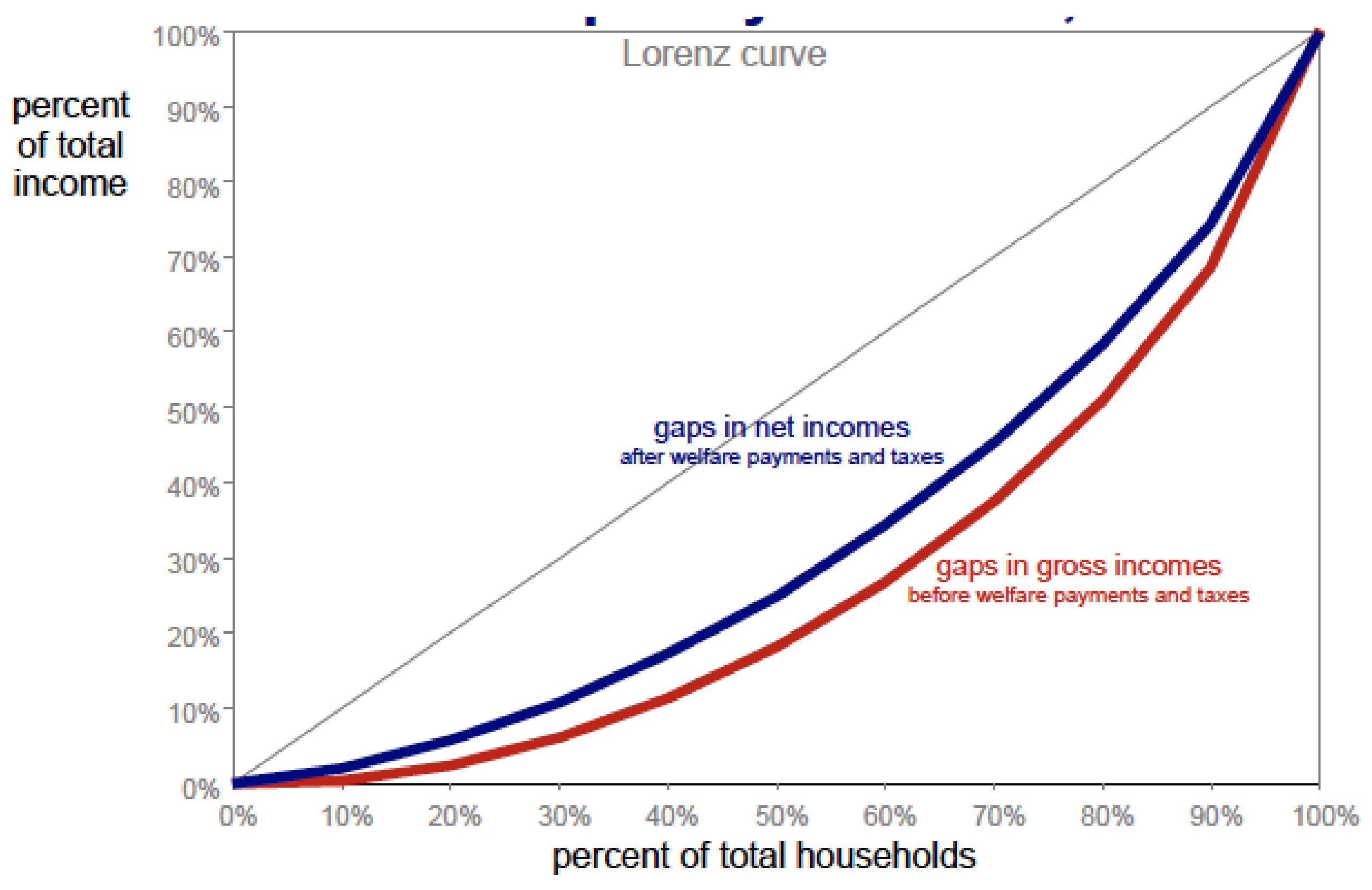
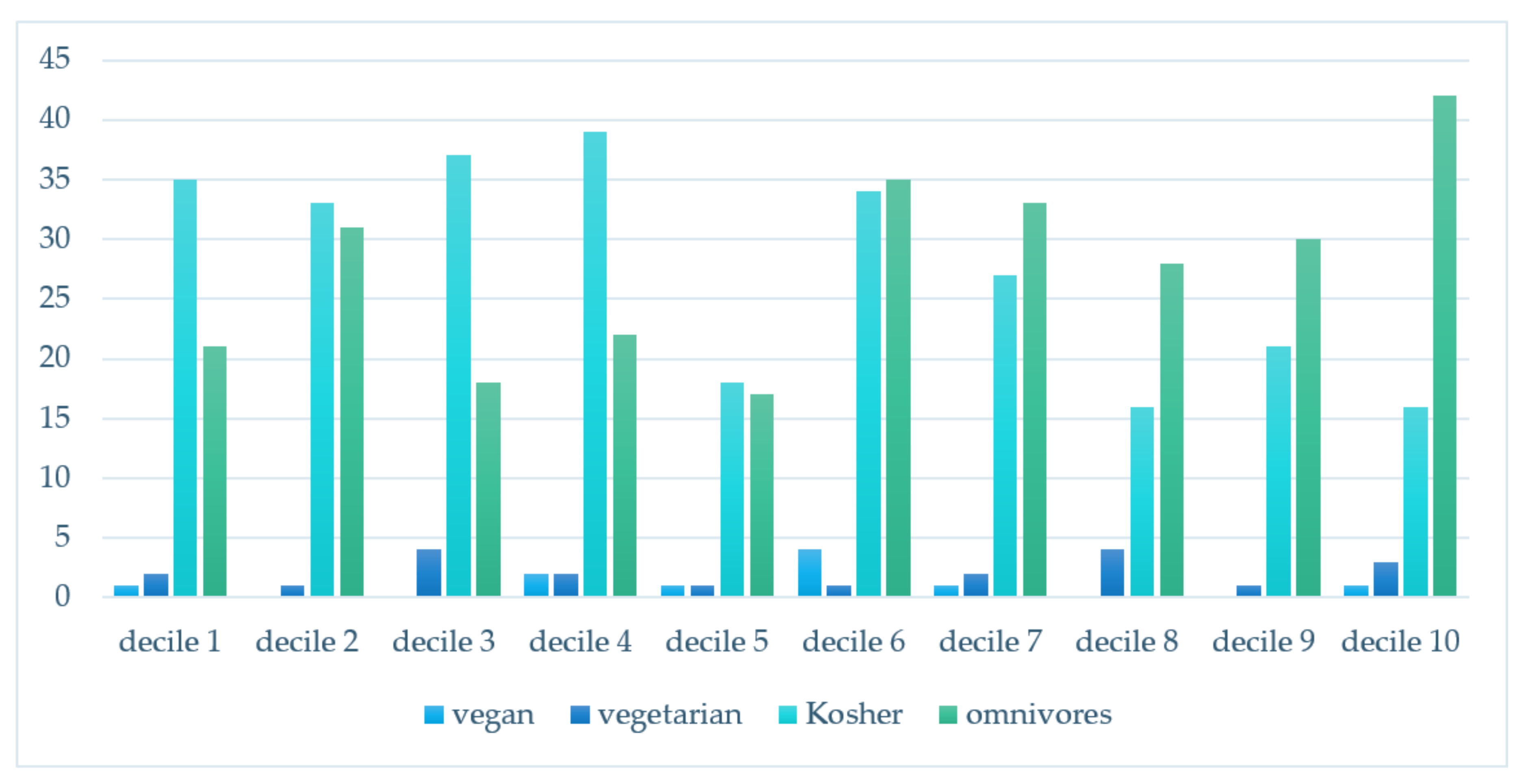
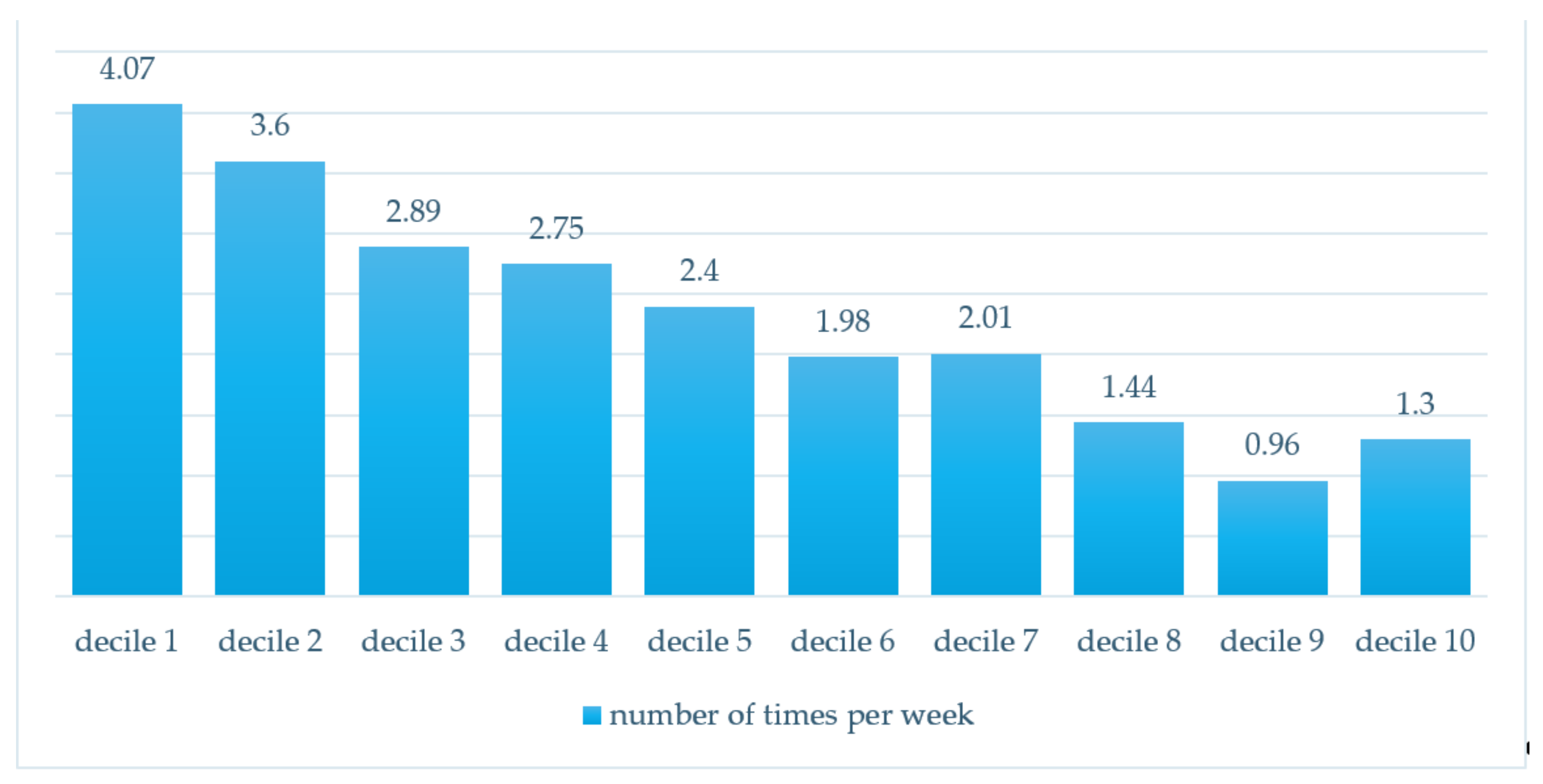
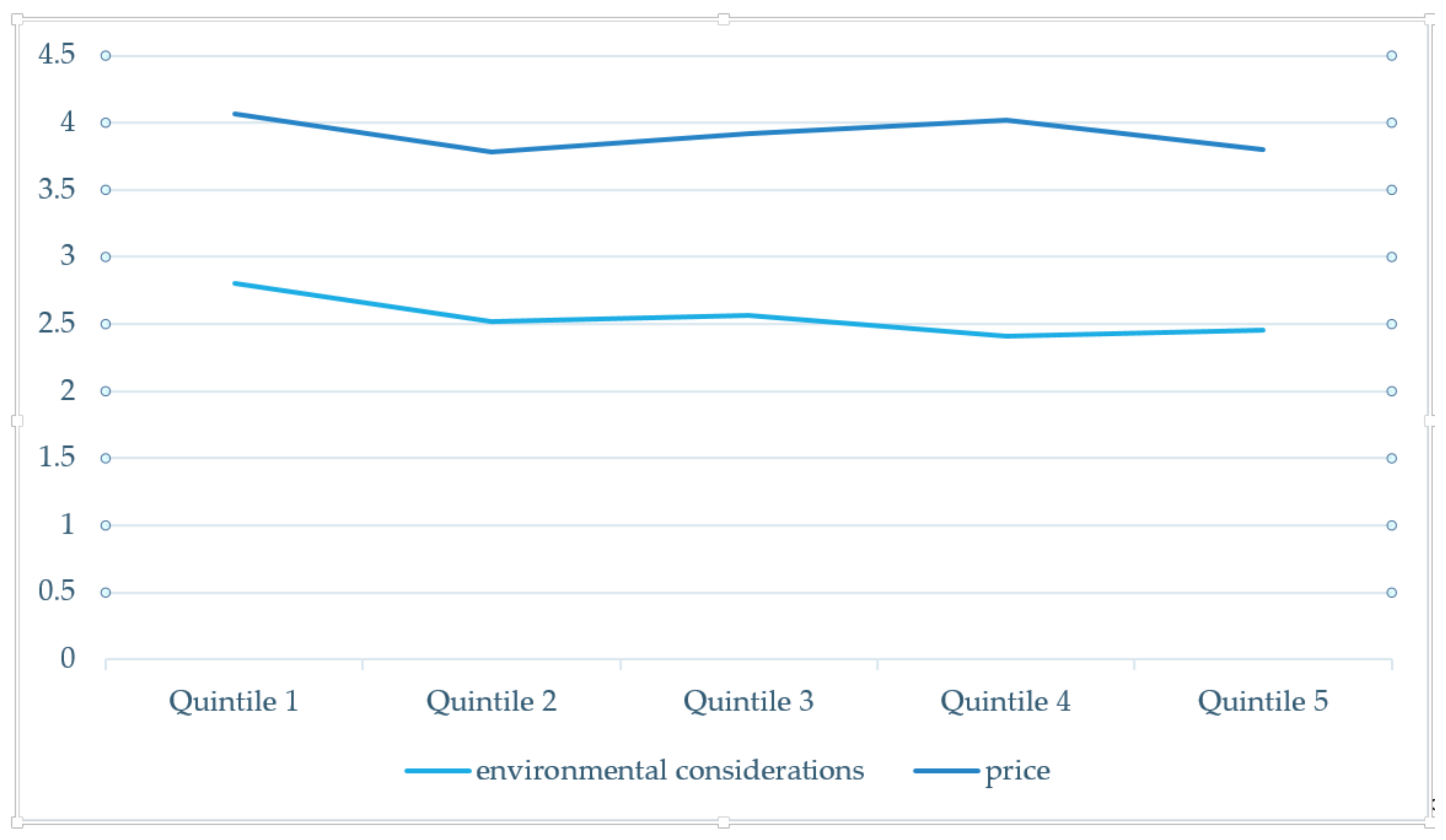
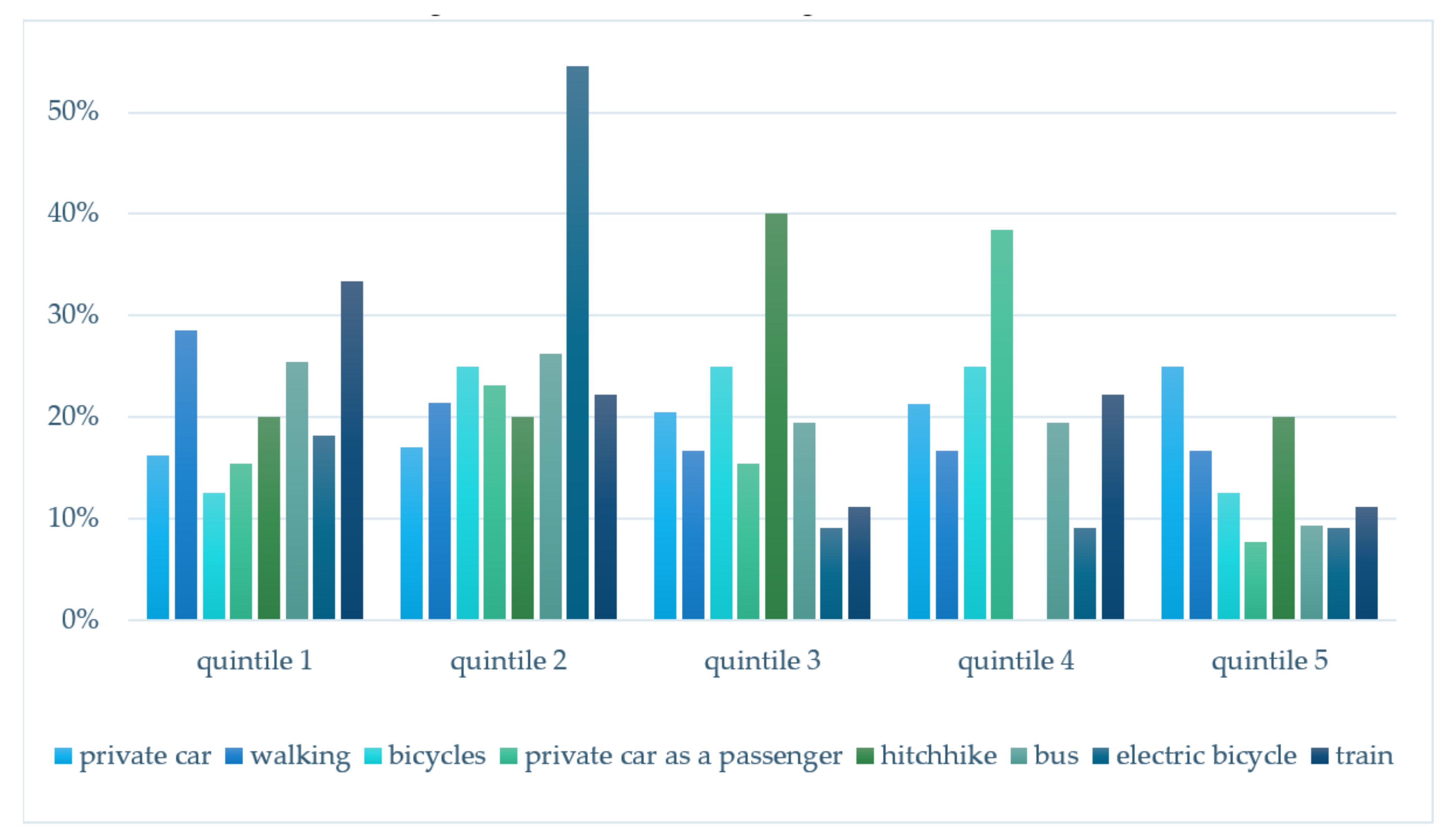
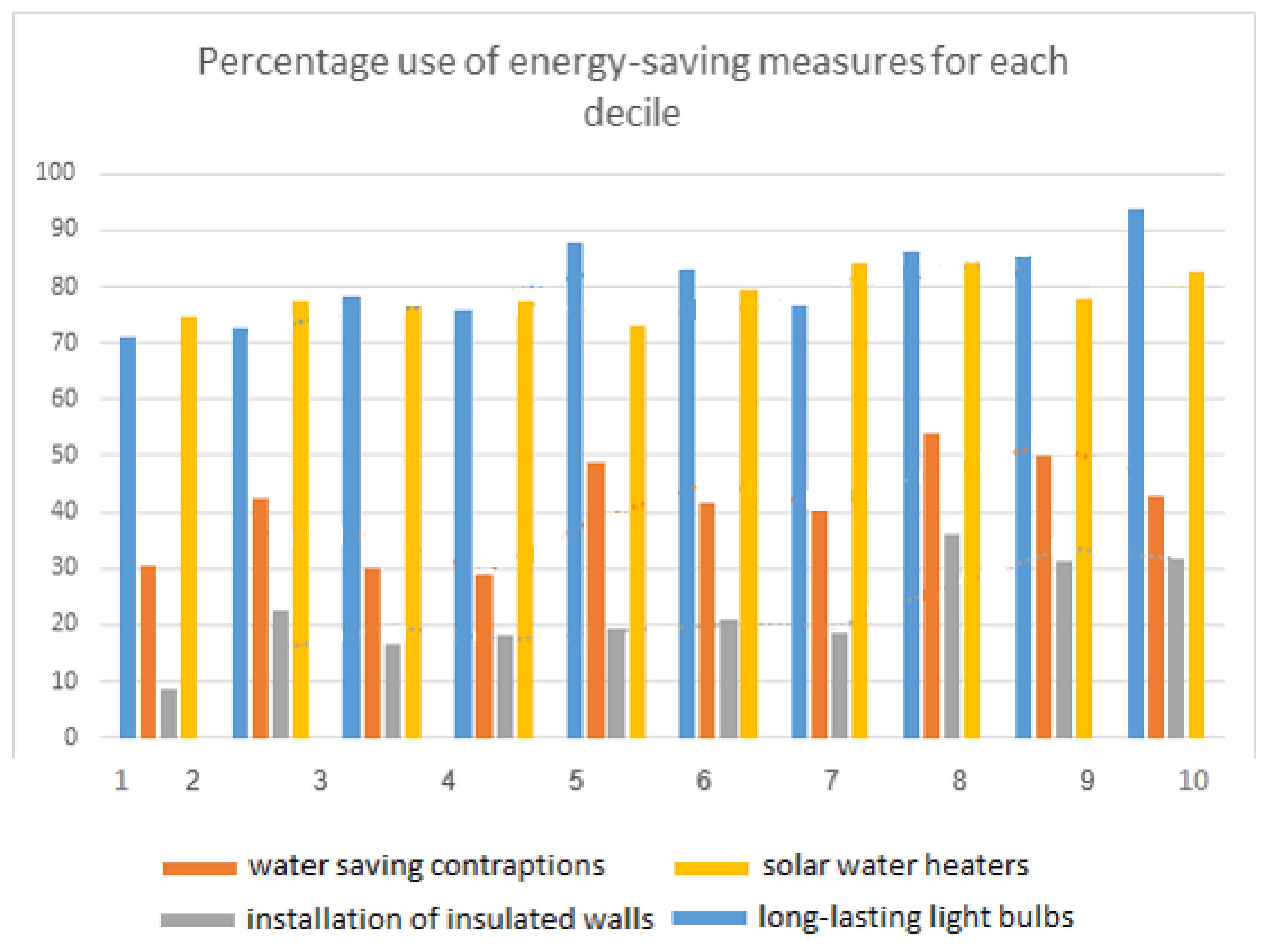
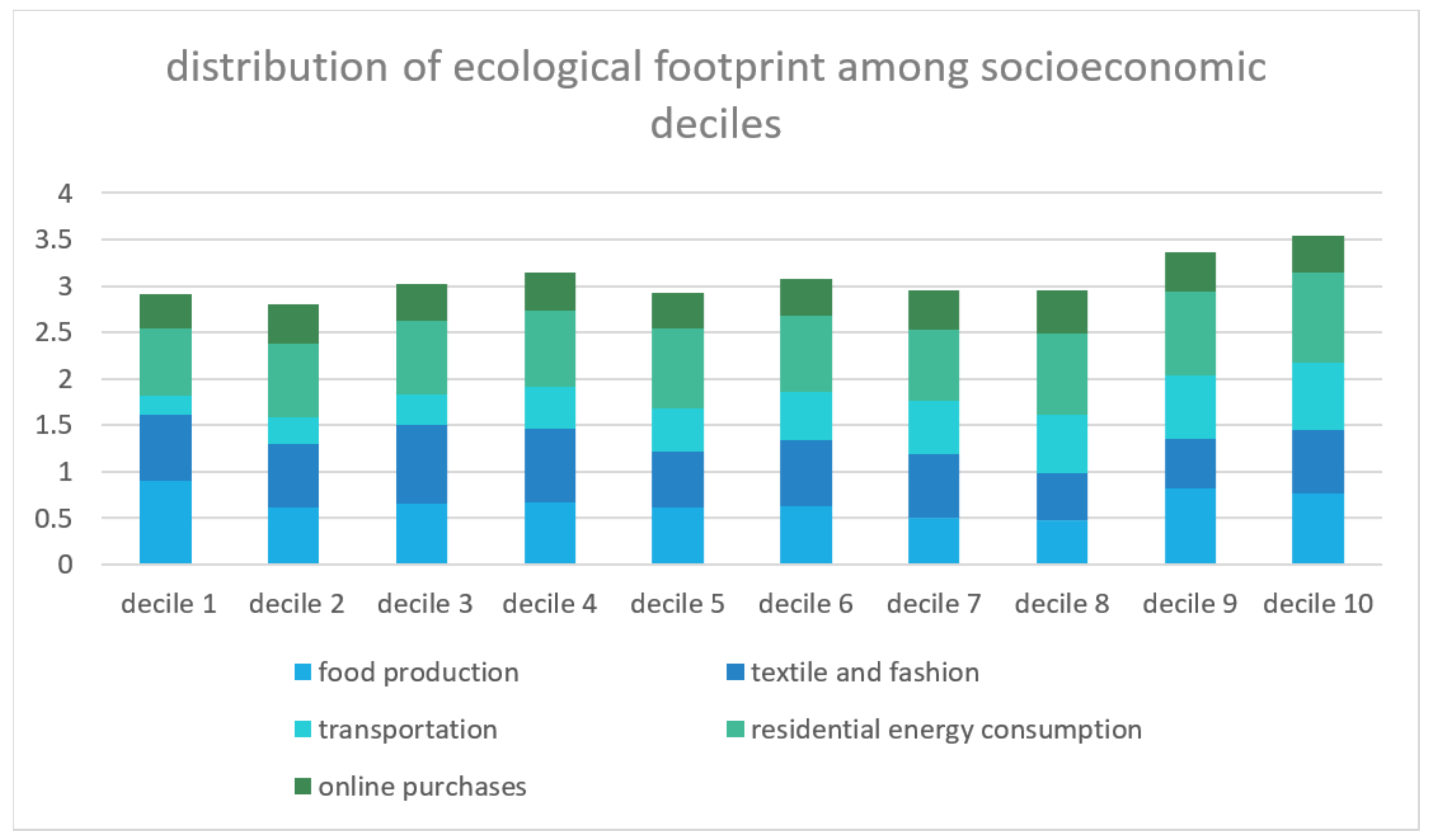
© 2019 by the authors. Licensee MDPI, Basel, Switzerland. This article is an open access article distributed under the terms and conditions of the Creative Commons Attribution (CC BY) license (http://creativecommons.org/licenses/by/4.0/).
Share and Cite
Peleg-Mizrachi, M.; Tal, A. Caveats in Environmental Justice, Consumption and Ecological Footprints: The Relationship and Policy Implications of Socioeconomic Rank and Sustainable Consumption Patterns. Sustainability 2020, 12, 231. https://doi.org/10.3390/su12010231
Peleg-Mizrachi M, Tal A. Caveats in Environmental Justice, Consumption and Ecological Footprints: The Relationship and Policy Implications of Socioeconomic Rank and Sustainable Consumption Patterns. Sustainability. 2020; 12(1):231. https://doi.org/10.3390/su12010231
Chicago/Turabian StylePeleg-Mizrachi, Meital, and Alon Tal. 2020. "Caveats in Environmental Justice, Consumption and Ecological Footprints: The Relationship and Policy Implications of Socioeconomic Rank and Sustainable Consumption Patterns" Sustainability 12, no. 1: 231. https://doi.org/10.3390/su12010231
APA StylePeleg-Mizrachi, M., & Tal, A. (2020). Caveats in Environmental Justice, Consumption and Ecological Footprints: The Relationship and Policy Implications of Socioeconomic Rank and Sustainable Consumption Patterns. Sustainability, 12(1), 231. https://doi.org/10.3390/su12010231






